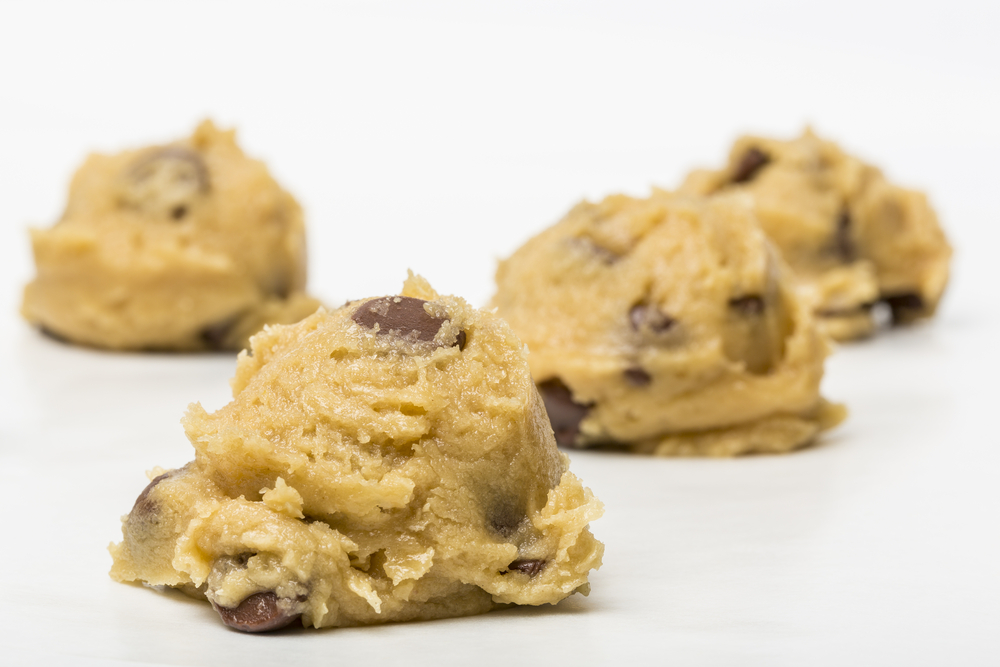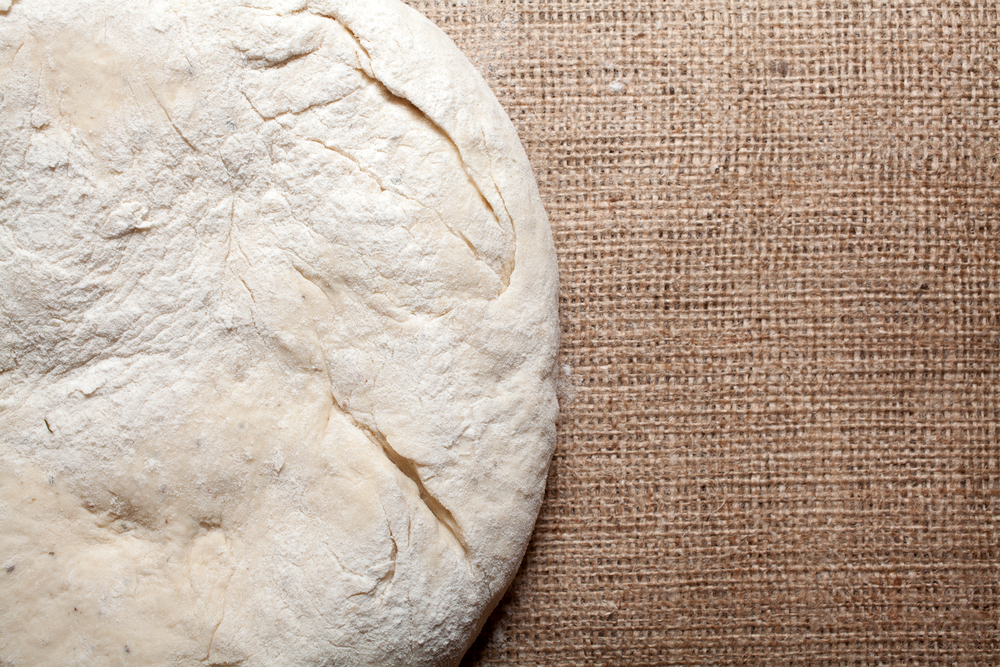Pillsbury crescent rolls are a beloved staple in many households, known for their versatility and delicious taste. With busy lives and the desire for convenient meal options, it’s natural to wonder whether you can freeze these crescent rolls to enjoy later.
The good news is, yes, you can! Freezing Pillsbury crescent rolls is a convenient way to extend their shelf life and have them on hand for spontaneous meal planning or last-minute entertaining.
It’s essential to follow the proper freezing and thawing processes to maintain the quality and taste of the crescent rolls. The dough should be packaged correctly to prevent freezer burn and maintain optimal freshness.
Additionally, understanding how to bake or reheat the frozen rolls correctly will ensure the best results, leaving you with golden-brown, delicious treats.
Key Takeaways
- Pillsbury crescent rolls can be frozen to extend their shelf life.
- Following proper freezing, thawing, and baking processes is vital for maintaining quality and taste.
- Freezing crescent rolls offers convenience for meal planning and unexpected entertaining.
Can You Freeze Pillsbury Crescent Rolls?

Pillsbury Crescent Rolls are a popular and convenient pre-made dough that many people love to have on hand for various recipes and quick snacks.
One common question that arises is whether you can freeze Pillsbury Crescent Rolls to extend their shelf life.
Yes, you can freeze Pillsbury Crescent Rolls. Freezing these crescent rolls is a useful way to store them for future use and it won’t compromise their quality or taste. By following a few simple steps, you can safely store and enjoy these delicious rolls at a later time.
To freeze Pillsbury Crescent Rolls, ensure that the dough remains in its original packaging. The sealed plastic packaging helps protect the dough from air exposure, which can lead to freezer burn.
For added protection, you may also place the packaged crescent rolls into an airtight freezer bag to further prevent air exposure.
To thaw the frozen crescent rolls, simply transfer them from the freezer to the refrigerator and let them sit for about 12-24 hours.
Avoid thawing the dough at room temperature, as this can lead to the dough becoming too soft and difficult to work with. Once thawed, gently unroll the dough and proceed with your desired recipe.
It’s essential to note that freezing Pillsbury Crescent Rolls may slightly affect the texture of the final baked product. However, this minor change should not significantly impact the taste or overall appearance of the rolls.
In summary, you can confidently freeze Pillsbury Crescent Rolls for later use. By following proper freezing and thawing techniques, you can enjoy these versatile and delicious rolls anytime you’d like.
The Process of Freezing Crescent Rolls
Freezing Pillsbury crescent rolls is a convenient way to store them for later use while maintaining their freshness. To do this effectively, it’s essential to follow the right process to ensure the crescent rolls remain delicious when it’s time to bake them.
First, it’s crucial to place the crescent rolls in a single layer on a baking sheet or tray for flash freezing. This method helps to prevent the crescent rolls from sticking together and allows for easy portioning when it’s time to bake. Allow the crescent rolls to freeze for about an hour until they are firm to the touch.
Once the crescent rolls have been flash frozen, transfer them into heavy-duty Ziploc bags or freezer-safe containers for proper storage. Heavy-duty bags are recommended as they provide a better seal to protect the crescent rolls from freezer burn.
If using a freezer-safe container, ensure it’s properly sealed to prevent air and moisture from entering.
Additionally, it’s important to label the bags or containers with the date of freezing. This helps to keep track of how long the crescent rolls have been stored and provides guidance on when they should be consumed for optimal taste and freshness.
By following this process of freezing Pillsbury crescent rolls, they can be conveniently stored in the freezer for up to two months. When ready to bake, simply remove the desired portion from the freezer and proceed with the baking instructions as stated on the product packaging.
With this method, the crescent rolls will maintain their quality and taste, ensuring a delicious treat every time.
How to Bake Frozen Crescent Rolls

From Frozen State
To bake Pillsbury crescent rolls from a frozen state, first preheat your oven to 350°F (175°C). While the oven is heating, prepare a baking sheet by lining it with parchment paper or a silicone baking mat. This prevents the crescent rolls from sticking while baking.
Remove the frozen crescent roll dough from the package and place individual crescent rolls onto the prepared baking sheet. Be mindful of spacing them about 2 inches apart to ensure proper cooking.
The cooking time for frozen crescent rolls is slightly longer compared to thawed dough. Typically, frozen rolls need to bake for approximately 20 to 25 minutes, or until they reach a golden brown color.
Always keep an eye on them during the baking process to avoid overcooking.
After Thawing
If you prefer to thaw the frozen crescent roll dough before baking, move the dough to the refrigerator and allow it to thaw overnight.
Once the dough has thawed, preheat your oven to 350°F (175°C) and line a cookie sheet or baking sheet with parchment paper or a silicone baking mat.
Carefully separate the crescent roll dough and place individual rolls onto the prepared sheet, ensuring they are spaced about 2 inches apart to allow room for expansion during baking.
Thawed crescent roll dough typically bakes in about 12 to 15 minutes. It is important to monitor the crescent rolls as they bake, looking for a golden brown color.
Once they’ve reached the desired color, remove them from the oven and let them cool on the baking sheet for a few minutes before transferring them to a wire rack.
Remember to always use a heavy-duty oven mitt when handling hot baking trays or sheets, and never leave the oven unattended while baking crescent rolls.
Thawing and Reheating Crescent Rolls
To maintain the best quality of the crescent rolls, proper thawing and reheating techniques should be followed. Crescent rolls can be thawed in two main ways: at room temperature or in the refrigerator.
For room temperature thawing, remove the crescent rolls from the freezer and let them sit on the counter for about 30 minutes.
Ensure they are still in their original packaging to prevent them from drying out. After 30 minutes, they should reach the desired texture and be ready for reheating.
Alternatively, crescent rolls can be thawed in the refrigerator. This method is recommended if you plan to use them later in the day, or if you want to ensure optimum freshness.
Place the crescent rolls in their original packaging on a plate or tray, then let them sit in the refrigerator for about 1-2 hours.
Once thawed, the rolls can remain in the refrigerator for up to 24 hours before use.
When it comes to reheating crescent rolls, there are a few options available. The microwave is the quickest method, and it only requires about 10-15 seconds to reheat a single roll.
Place the roll on a microwave-safe plate and use a low to medium setting to prevent overcooking.
It is essential to know that microwaving can change the texture of the rolls, making them slightly softer and less flaky.
Another option for reheating is using a conventional oven or toaster oven. Preheat the oven to 350°F (175°C) and place the crescent rolls on a baking sheet.
Reheat them for about 5-8 minutes, or until they are warmed to your preference. This method will maintain the original texture and flakiness of the crescent rolls.
Remember to keep an eye on the rolls when reheating to avoid excessive browning or burning. Always use the appropriate thawing and reheating method based on your preference and convenience, but also consider the impact of each method on the final texture and quality of the crescent rolls.
Quality and Shelf Life of Frozen Crescent Rolls
 When it comes to preserving the quality of Pillsbury Crescent Rolls, freezing is a viable option. By properly storing the rolls in a freezer, their taste and texture can be maintained for a longer period of time.
When it comes to preserving the quality of Pillsbury Crescent Rolls, freezing is a viable option. By properly storing the rolls in a freezer, their taste and texture can be maintained for a longer period of time.
The shelf life of frozen crescent rolls is generally up to 12 months. This extended time frame allows for the rolls to be enjoyed at a later date without compromising their quality.
However, it is important to note that the longer the rolls are stored in the freezer, the more susceptible they are to freezer burn.
Freezer burn can affect the texture and taste of the rolls, so it is essential to store them in airtight containers or heavy-duty freezer bags to minimize the risk of freezer burn.
The texture of the crescent rolls is an essential component of their appeal, as the flaky layers should remain soft and tender after baking. When frozen crescent rolls are properly stored and thawed, their texture should be quite similar to that of unfrozen rolls.
A precautionary measure to avoid any negative impact on texture is to ensure the rolls are fully thawed before baking, as this allows for even cooking and optimal texture.
The taste of the crescent rolls may be slightly affected by freezing; however, it should not be a significant difference if stored and thawed correctly.
To ensure the best possible taste, baking the rolls at the same temperature and for the same duration as when freshly made is recommended. This will result in a similar taste experience as if the rolls had not been frozen.
In summary, freezing Pillsbury Crescent Rolls can extend their shelf life up to 12 months, while maintaining the quality in terms of taste and texture.
Proper storage and thawing methods will minimize any potential negative effects of freezing, such as freezer burn and uneven cooking.
Recipe Ideas for Frozen Crescent Roll Dough
Using frozen crescent roll dough can make meal preparation quick and easy for breakfast, dinner, or dessert. There are many creative ways to incorporate crescent roll dough into your recipes. Below are some ideas to help you get started.
Frozen crescent roll dough is a perfect base for making pepperoni pizza crescent rolls. First, thaw the frozen dough according to package instructions.
Next, spread a spoonful of pizza sauce on each triangle of dough, followed by a slice of pepperoni and a sprinkle of mozzarella cheese.
Roll the dough up, starting with the wider end, and bake them in a preheated oven until golden brown and crispy. Serve with extra pizza sauce for dipping.
Crescent roll dough can also be a great addition to your breakfast menu. You can easily make a breakfast braid by filling the dough with scrambled eggs, crispy bacon, and shredded cheese.
To prepare, roll out the thawed dough onto a greased baking sheet, and create cuts along the sides about one inch apart. Layer the ingredients down the center of the dough, alternating with the bacon and eggs.
Then, fold the cut edges up and over the filling, creating a braided pattern. Bake in a preheated oven until the dough is golden brown.
Desserts can be prepared quickly using frozen crescent roll dough. Fruit turnovers are a classic option that can be made by adding a dollop of your favorite fruit preserves or pie filling onto each dough triangle. Fold the dough over the filling and seal the edges with a fork before baking.
After the turnovers are baked and cooled, drizzle them with a simple glaze made from powdered sugar and milk.
Overall, frozen crescent roll dough provides numerous opportunities for creating delicious dishes for different occasions. Don’t hesitate to experiment with various fillings and ingredients to find your family’s favorite combination.
Precautions When Freezing Crescent Rolls

When considering freezing Pillsbury crescent rolls, it is important to take certain precautions to ensure their quality and safety. By following these guidelines, one can prolong the shelf life of the rolls while also maintaining their flavor and texture.
First, be cautious about the storage methods. Crescent rolls should be wrapped tightly in their original packaging or an airtight container to prevent freezer burn.
Freezer burn occurs when food is exposed to too much air, causing ice crystals to form on the surface and the taste to deteriorate.
Next, it is vital to understand that freezing crescent rolls is best done with unbaked dough rather than after they have been baked.
Baked crescent rolls may become soggy or lose their flaky texture once thawed. Unbaked dough, on the other hand, maintains its freshness and can be prepared as usual once defrosted.
Additionally, try not to refreeze the dough once it has been thawed. Refreezing can cause excess moisture in the dough, affecting its quality and texture. It is advisable to portion the dough and only thaw what is needed to avoid wasting it.
Another precaution to remember is that certain variations of crescent roll dough, such as pizza dough or cinnamon rolls, may require slightly different freezing and thawing methods. Consult the specific product’s instructions for optimal results.
Finally, make sure to label the rolls with the freezing date so that they can easily be identified and used within their recommended shelf life. This helps prevent spoilage and ensures the crescent rolls remain at their peak quality.
By following these simple yet essential precautions when freezing Pillsbury crescent rolls, one can enjoy freshly baked treats anytime without compromising taste or quality.
Conclusion
It is possible to freeze Pillsbury crescent rolls for future use. Freezing allows for the preservation of the dough’s quality, extending its shelf life, and providing a convenient option for meal planning.
To freeze crescent rolls, simply wrap the unopened tube tightly in plastic wrap and place it in a freezer-safe resealable bag. This will protect the dough from freezer burn and ensure maximum freshness.
For best results, it is recommended to freeze the dough for no longer than two months.
When it’s time to use the frozen crescent rolls, allow the dough to thaw in the refrigerator for several hours or overnight. Doing so will ensure even cooking and prevent a soggy texture.
Once thawed, the dough can be rolled out and filled as desired, then baked according to package instructions. The taste and quality of the crescent rolls should remain similar to their fresh counterparts.
In summary, freezing Pillsbury crescent rolls is an effective and convenient method to extend the shelf life and preserve the quality of the dough. Ensure proper storage and thawing techniques are followed for the best results.
Also, check out a similar post: Can You Freeze Uncooked Tortillas
Frequently Asked Questions
How to store unused crescent roll dough
To store unused crescent roll dough, wrap it tightly in plastic wrap or place it in an airtight container. Then, refrigerate it for up to two days. If you need to store it longer, consider freezing the dough following the instructions below.
Best way to thaw frozen crescent roll dough
To thaw frozen crescent roll dough, place it in the refrigerator overnight. Avoid using a microwave or placing it at room temperature, as this may cause uneven thawing or affect the dough’s texture.
Once the dough is thawed, follow the baking instructions on the package or in your recipe.
Tips for baking frozen crescent rolls
When baking frozen crescent rolls, follow the recipe or package instructions but add a few extra minutes to the initial baking time.
This allows the dough to cook through evenly without becoming overbaked on the outside. Check for doneness by inserting a toothpick into the center of the roll; if it comes out clean, the crescent rolls are ready.
Freezing and cooking Pillsbury biscuits
Freezing Pillsbury biscuits is simple. Place the uncooked biscuits on a baking sheet and freeze them for one to two hours. Once frozen, transfer the biscuits to an airtight container or a plastic freezer bag. Label the container with the date and type of biscuit.
When you’re ready to bake, place the frozen biscuits on a baking sheet and bake according to the package instructions, adding a few extra minutes to the baking time.
Can Pillsbury refrigerated dough be frozen?
Yes, Pillsbury refrigerated dough can be frozen. To freeze the dough, wrap it tightly in plastic wrap or aluminum foil, or place it in an airtight container.
Label the container with the date and type of dough. Frozen Pillsbury dough should be used within two months to ensure optimal quality.
Freezing and using homemade crescent roll dough
Freezing homemade crescent roll dough is a convenient way to have fresh rolls whenever you like. After preparing the dough, shape the rolls, and place them on a baking sheet lined with parchment paper.
Freeze the rolls for one to two hours or until solid, then transfer them to an airtight container or a freezer-safe plastic bag. Label the container with the date and type of roll.
When you’re ready to bake, thaw the rolls in the refrigerator overnight and then follow your recipe’s instructions for baking.







